2023 Summer ARC Light
Posted by: Christie Nissen on July 12, 2023
Posted in: Newsletter
Summer fun with Ag Relations Council
By Sally Behringer, ARC president
What are you doing with your summer so far? The Agricultural Relations Council (ARC) has had a busy summer, thus far, and there’s more to come!
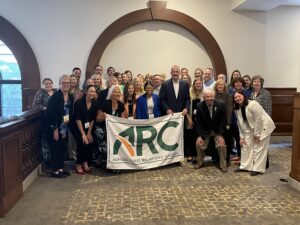
Our 2023 Annual Meeting in Des Moines, Iowa, did not disappoint! We kicked off things at our opening breakfast with Iowa Secretary of Agriculture and Land Stewardship Mike Naig, our keynote speaker. Secretary Naig gave us an update on key policy issues and trends facing Iowa Agriculture, and then took ARC members’ questions.
Our first day featured panels discussing hot topics such as “What Reporters Want from PR Pros,” “The Building Blocks of Crisis Communications” and “Social Media Best Practices.” On Thursday, our tour day was packed with stops at Des Moines Water Works, World Food Prize Hall of Laureates, Wills Family Orchard and Stine Seed Company. Some particular highlights from the tour day:
- The docent who led our tour at the World Food Prize Hall of Laureates was Meredith McHone-Pierce, who has the honor of being the first female to graduate from Iowa State University with a degree in agricultural communications.
- At the Stine Seed research farm we were honored to have company President Myron Stine and his brother Warren, who is in charge of their corn research, provide the tour and answer questions.
Extra-curricular highlights of the meeting included finding some outstanding places to eat in and around Des Moines, and discovering an elusive speakeasy located in a secret location in our own hotel!
Hope to see you at the Agricultural Media Summit!
Are you attending the Agricultural Media Summit later this month? I hope I’ll see you there! I’ll be on hand representing ARC, participating in a public relations panel and speaking to Agricultural Communicators of Tomorrow members. If you’re interested in learning more about ARC, say “Hi!” and let’s chat!
Congratulations to our Golden ARC Winners!
This year’s Golden ARC Awards featured a showcase of some of the best public relations work to be found – in any industry! Congratulations to all of our very deserving Golden ARC Award winners from these organizations:
OBP
Cultivate
Padilla
Filament
AdFarm
Curious Plot
Kansas Farm Bureau
American Farm Bureau Federation
G&S Business Communications
Farm Credit East
And a special congratulations goes out to OBP for winning the Golden ARC de Excellence for their “Field of Dreams” event held on behalf of client DEKALB seed.
Do you have questions or ideas on how we can continue to grow ARC and attract more members? I’d love to hear them! Contact me any time at sally@mustangred.com.
Let’s grow ARC together!
Sally Behringer
ARC President
E-mail: sally@mustangred.com
Cell phone: 785-218-9759
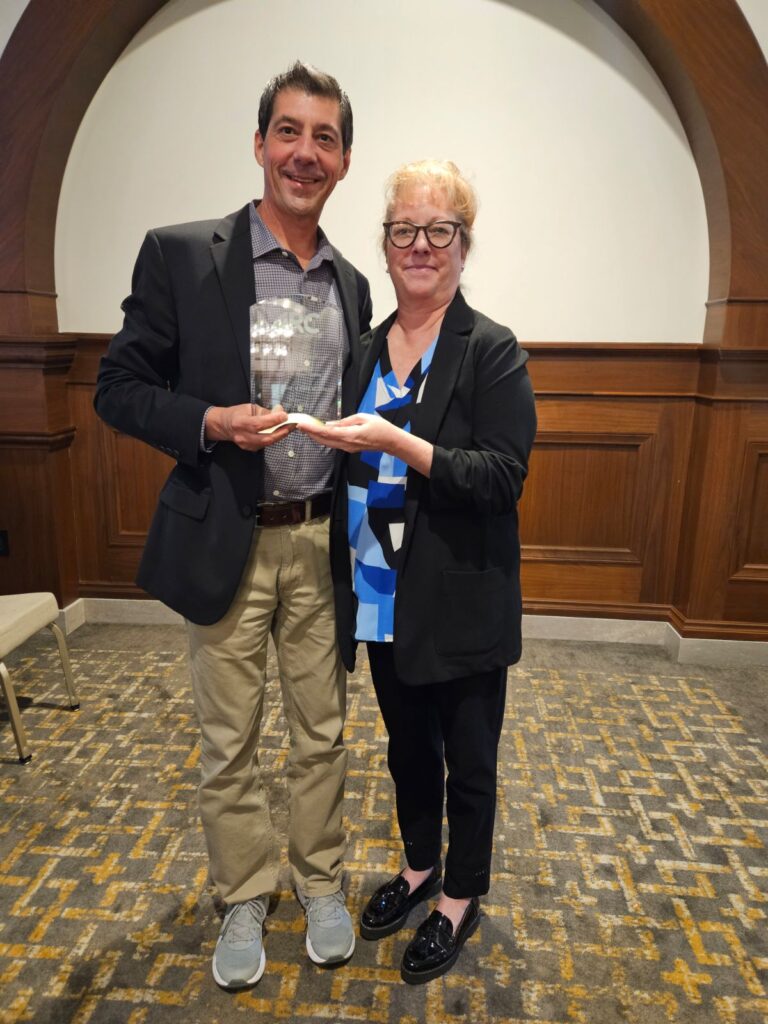
OBP Agency claims Golden ARC de Excellence award
The Agricultural Relations Council (ARC) revealed the winners of its 2023 Golden ARC Awards contest on
June 14, in Des Moines, Iowa, during the group’s annual meeting. OBP Agency won the Golden ARC de Excellence Award – the contest’s best all-around entry in the campaigns division – for its “DEKALB Brand + Field of Dreams” entry in the Events and Observances category. The Golden ARC Awards contest has recognized exceptional work created by public relations professionals in the agricultural industry since 1990.
Along with the Golden ARC de Excellence Award, ARC presented 26 Golden ARC awards. See the list of Golden ARC award winners below.
| Category | Contestant | Entry name |
| Campaign Organization or Corporate Reputation | Padilla | Agoro Carbon Alliance PR Campaign |
| Campaign Brand Reputation | AdFarm | AgBiome Theia Fungicide Launch |
| Campaign Corporate Social Responsibility and Sustainability | Kansas Farm Bureau | Rural Minds Matter |
| Campaign Internal | AdFarm | Merck Animal Health Reproductive Solutions Messaging |
| Campaign Marketing Communications for Agricultural Audiences | Curious Plot | Fueling The Future |
| Campaign Marketing Communications for Non-ag Audiences | Filament | Purina Flock’s Operation Fresh Egg |
| Campaign Agricultural Image | Kansas Farm Bureau | Sustainability on the Farm |
| Tactic Annual Reports: Non-financial Annual Reports | Padilla | Cargill Mycotoxins Report |
| Tactic Graphic Elements | OBP Agency | Missouri Soybean Mural Wall |
| Tactic Digital & Social Media: Podcasts | Kansas Farm Bureau | Inside Ag |
| Tactic Digital & Social Media: Video | Cultivate | State Fair of Texas Hype Videos |
| Tactic Digital & Social Media: Websites | Farm Credit East | Farm Credit East.com |
| Tactic Feature Writing | Curious Plot | Addressing Agronomic Challenges: FMC CropLife Contributor Series |
| Tactic Editorial/Op-Ed Columns | OBP Agency | USB Sustainability Op-Ed Campaign |
| Tactic Print Media Relations: Agricultural Audiences | OBP Agency | Bayer North Carolina Grower Story Pitch |
| Tactic Print Media Relations: Non-agricultural Audiences | Filament | Purina Feed Cost Management Tip |
| Tactic Print Publications: Magazines and Newspapers | Kansas Farm Bureau | Kansas Living Magazine |
| Tactic Print Publications: Newsletters (print or digital) | American Farm Bureau Federation | FBNews digital newsletter |
| Tactic Print Publications: Single-issue Publications | National Cattlemen’s Beef Association | 2023 Exhibitor Prospectus |
| Tactic Special Events | Cultivate | State Fair of Texas Youth Livestock Auction |
| Tactic Special Events | Padilla | TELUS Agriculture & Consumer Goods – North Carolina Community Board Launch |
| Tactic Media Events and News Conferences | Curious Plot | Purina Dairy Media Day |
| Tactic Direct Mailing/Direct Response | National Cattlemen’s Beef Association | 2023 Trade Show Prospect Mailing |
| Tactic Unique Tactics and Executions -Open Category | OBP Agency | Deltapine Special Texas Report |
| Tactic TV Broadcast Media Relations – Non-agricultural Audiences | AdFarm | American Royal Rodeo Media Relations |
| Tactic Collateral/Literature | Padilla | EarthOptics ‘Secrets Below the Surface’ Advertorial |
Janice Person, Deron Johnson join ARC’s Agricultural Public Relations Hall of Fame
The Agricultural Relations Council (ARC) inducted two members – Janice Person, Grounded Communications CEO/founder, Olivette, Mo.; and Deron Johnson, Curious Plot executive vice president, chief brand & culture officer, Lenexa, Kan. – into the Agricultural Public Relations Hall of Fame during ARC’s Golden ARC Awards Banquet, held June 14, in Des Moines, Iowa. Annually, this award is given to agricultural public relations professionals who have made lifetime contributions to the industry. The Agricultural Public Relations Hall of Fame is sponsored by ARC and Agri Marketing magazine.
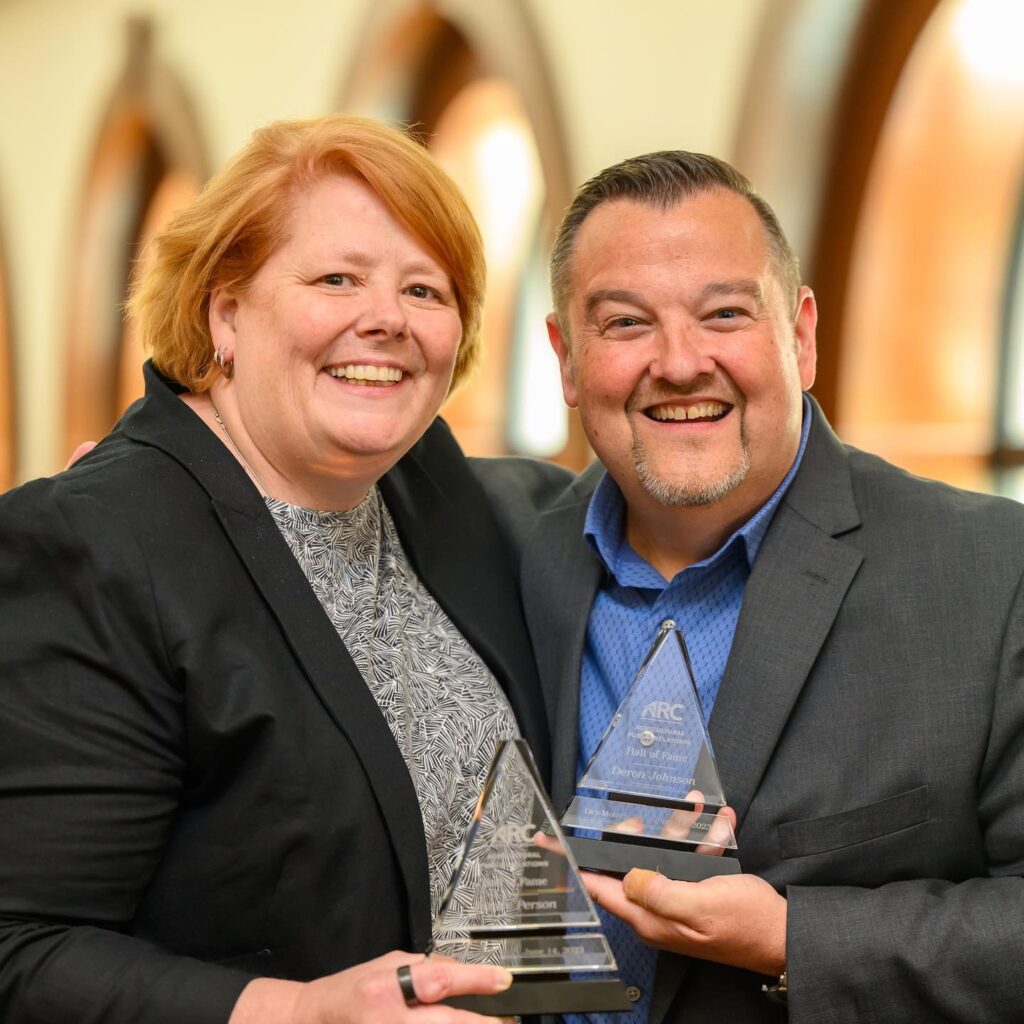
Photo Credit: Joe Murphy @jmurphpix
Raised a “city kid” in Memphis, Tenn., Person earned a bachelor’s degree in mass communications from Phillips University, Enid, Okla., and master’s degree in journalism and public relations from the University of Memphis. During graduate school, she researched the media under various Soviet general secretaries and interviewed editors and reporters in Volgograd, Russia. A family friend introduced Person to agriculture via an internship with Little Publications (Cotton Farming, Rice Farming and Custom Applicator). “It was the perfect entry into the business of communications while also getting me some time with the real why of agriculture – farmers and consultants,” Person remarked.
Next, Person joined Gibbs & Soell (now G&S Business Communications) as an account executive. She focused on ICI Ag’s (now Zeneca) southern row crops portfolio.
Person joined Delta and Pine Land Company as it was introducing cotton seed that offered in-plant control of a worm that devastated crops the year before. As the company’s first professional communicator, she worked on all products, but started with the technical aspects of new varieties as farmers needed information on how to manage the revolutionizing technologies. “Folks often said I was hired to be the ‘decoder ring’ that took info from all the PhDs and made it actionable for farmers,” she commented.
Via a merger, Person spent 11 years with the Monsanto Company, serving as public affairs director, social media director and online engagement director. “I was a deep resource for the company on cotton but also added in chemistry (e.g., Roundup), dairy (including its divestiture to Elanco) and soybeans (including the launch of Roundup Ready 2 Yield and early work on Dicamba-tolerant crops),” she explained. During this time, Person also explored and capitalized on the use of Twitter and other online media platforms. She worked with others to form the AgChat Foundation – a non-profit designed for farmers to empower each other in consumer outreach efforts that helps the general public better understand agriculture.
In 2019, Person founded Grounded Communications LLC, which provides speaking and consulting services, and builds content to reach outside of agriculture. “What I love so intensely about this part of my career is the depth of knowledge and network, and how I can apply that to reach goals both for myself and clients,” she stated. Two ongoing Grounded Communications programs include “Grounded by the Farm” (food and farm podcast) and “Grounded and Rising” (member-based community and training platform).
Johnson earned his bachelor’s degree in journalism from Kansas State University in 1988. He spent nine years as a journalist, including seven years as senior editor for The Packer – the flagship publication of Vance Publishing Corp. (previously incorporated into Farm Journal Media).
Johnson spent three years in in corporate/brand communications with Pfizer Inc. and then Zoetis (animal segment was spun off from Pfizer) as director of communications for the U.S. Companion Animal business.
With 23 years spent in agency leadership roles, Johnson’s firms and positions include FleishmanHillard, Kansas City, Mo., as public relations management supervisor; Gibbs & Soell (now G&S Business Communications), Chicago, as public relations client service manager; Brighton, St. Louis, as director of public relations; Rhea + Kaiser, Chicago, as vice president/director of public relations; and Curious Plot, Kansas City, senior vice president of public relations and now executive vice president, chief brand and culture officer.
“While my role at Curious Plot more closely resembles an overall client/account leader, I very much consider – and will always consider – myself as a ‘PR native’,” said Johnson. At Curious Plot, he is responsible for the expression of the agency’s brand and reputation in the marketplace. He also leads Curious Plot’s diversity, equity and inclusion strategy, and serves as a senior leader of the agency’s animal health practice.
An ARC member since 2005, Johnson served on the ARC board of directors from 2006 to 2018, with three years as president. “The most meaningful decision during my time as president was the decision by the board to determine the future of ARC,” Johnson noted. “We were working under volunteer leadership, the active membership list was less than 20 people, and the overall viability of the organization was in question. I’ll never forget the board call where the sole agenda item was to either sunset ARC as an organization or commit to jump-starting it. I don’t know that there was any real appetite to end things (certainly not by me and on my watch as president), but the option was on the table.” The board decided to move forward with ARC and the first annual meeting held after this decision was a success, which was absolutely critical in determining the organization’s path forward.
What are social media best practices?
Submitted by Jackie Miller, ARC Scholarship Recipient
Followers. Impressions. Views. Click-throughs. Shares. As communicators, PR professionals and marketers in the current world, these can no longer be “unknown terms.” Social media has developed into a way of life, a career, a connection tool and a branding piece. Three knowledgeable individuals, Avery Amensen of Flynn Wright, Devin Benish from the Iowa Soybean Association, and Mallory Cates from Blue Compass Interactive, used their digital marketing knowledge at the ARC Annual Meeting to educate on “Social Media Best Practices.” Each presenter shared important information topics to help all elevate their personal and professional platforms.
Next, Benish emphasized how we can boost our social platforms by remembering simple tricks when posting each time. These tips include focusing more on images, not the text, finding compelling images and breaking up the texts for each post. Benish also advised on how to deal with negativity throughout different content. “Take the high road and respond with the facts,” said Benish. Through his experience at the Iowa Soybean Association, he has learned that building a social media community that supports your business is the most important to secure as one achieves their business goals.

First, Amensen highlighted User Generated Content and the power of connecting to the targeted audience. She proposed, “How do you keep a consistent stream of audiences?” Although getting lost in the complexity of social media tactics is easy, it is important to showcase personal touches. Taking a different perspective on the message is a new way to drive new campaigns, enhancing content quality and overall outreach.
Lastly, Cates taught a simple tip to remember when using social media content; keep it “short, sweet and spicy.” Keep captions short, fewer than 150 characters, yet have an appealing hook. Keep the content sweet to show the benefit and spicy to add flair to something controversial to grab their attention. Understanding and taking advantage of algorithms can add value to the interest of all audiences. Additionally, adding a call-to-action button to all advertisements is essential to telling users what the next step should be. Cates stated, “If it isn’t given to people, they won’t utilize it.”
With the continuous advancements in social media, seeking business success is only derived from staying educated on the latest media strategies. Thanks to Amensen, Benish and Cates for being our sources for becoming more educated professionals.
How are you going to find ways to continue to become familiar with some of the common social media terms? How are you going to add new value to your business today?
Building blocks of crisis communications
Submitted by Rebecca Colnar, Montana Farm Bureau/Cow Camp Communications
The 2023 ARC Annual Meeting crisis communications panel covered everything from a proposed butter sculpture of Michael Jackson to communicating with the public about the “swine flu.”
Leah Daniels, who currently is with NewsWorks, was working with the Iowa State Fair when a young group from the local ad agency surfaced the idea of the fair’s annual butter sculpture to be that of the recently late Michael Jackson. With concerns surfacing about the statue from the board and fair staff, the idea was developed for the fair board not to either approve or oppose the controversial sculpture, which could cause backlash either way they decided, but put the vote to the public via the internet using survey software. Although people anywhere could vote, only those with an Iowa zip code were considered in the decision making.
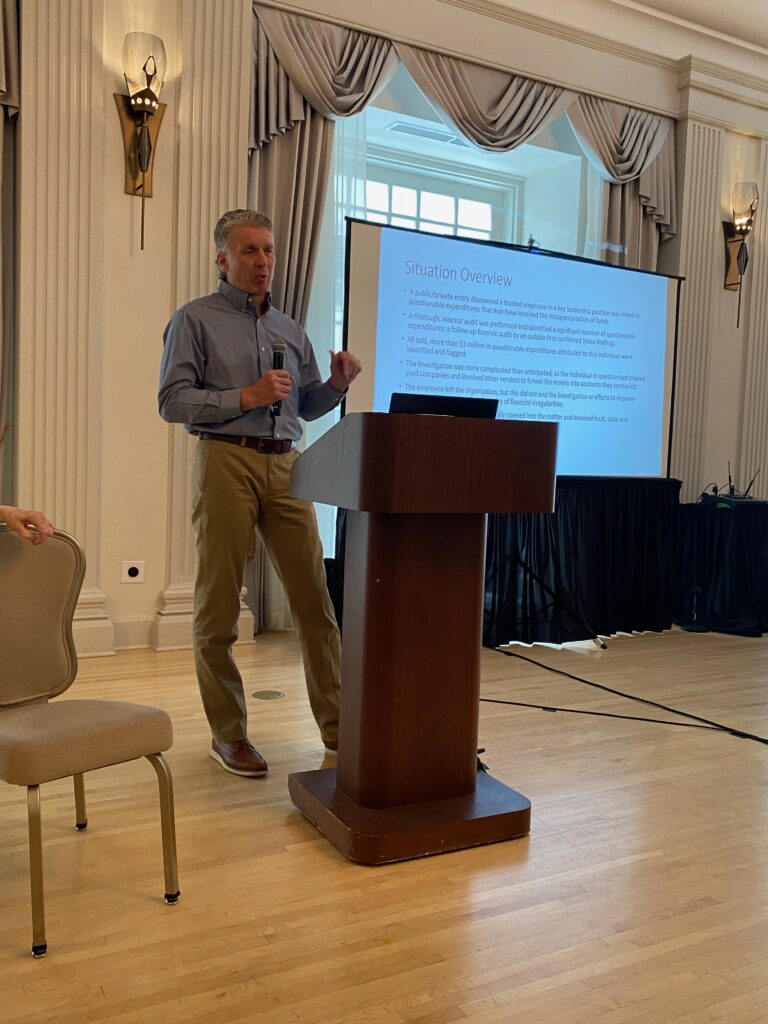
The media jumped at the chance to cover this entertaining story. Will the public vote “yes” or “no”? The fair received positive publicity. Although the Jackson sculpture received a small amount more against than for, Daniels noted it was a “public relations miracle” that not only did the fair receive an extraordinary amount of coverage, but the client (the fair) came out fine with no negative publicity.
Cindy Woodruff was working with the National Pork Producers when the “swine flu” broke out in 2009.
“Crisis management is exciting. Keep in mind there is always a way out and a way to win,” said Woodruff. “What happened with this hog disease was that the media took the name, the ‘swine flu,’ which had nothing to do with coming from pigs, and created hysteria about consuming pork.”
She noted that from April 15 to the end of November that year, they were in crisis mode to educate consumers that “pork is safe” with the goal being to have the name changed to its actual designation H1N1.
Their strategy was to work as a team across each segment, monitor media coverage and respond rapidly, have scientific proof points from nationally recognized researchers, measure consumer confidence and keep stakeholders informed.
Woodruff indicated that they were successful in getting the media to switch from swine flu to H1N1, demonstrated pork was safe to eat and strengthened the industry crisis plan through real-life experience.
“Have drills and get people engaged,” Woodruff said. “Social media has become a huge game changer, but the pro advised just taking lumps on social media and don’t respond, as well as telling company executives to calm down.”
Mark Yontz, Wixted and Company, talked about how his employer is handling crisis communications for a client that had an employee grossly misappropriate funds.
He encourages thinking about how stakeholders are affected and remember the media is not as important as your stakeholders. He said it is important to manage the media. You do not have to share everything, but you do need to talk to them.
“Be pre-emptive and proactive with your key audiences, such as your board, elected officials, law enforcement and so forth, and remember that not all audiences need to be provided with the same level of information; determine who needs to know what and when,” Yontz said.
The key challenge is managing a level of confidentiality. His tips in crisis communications:
- Tell your story. Be factual and transparent, but manage the message.
- Be prepared. Anticipate what could happen and act accordingly.
- Don’t add fuel to the fire.
- Have a plan and be a leader.
- Have ambassadors in place.
- Foster consistency of your message.
His final advice was the importance of being proactive long before any “crisis.”
“Seed the environment with good things and invest in your community,” he advised. “Then if something does happen, you become the victim, not the villain.”
Journalist panel: What reporters want from PR professionals
Submitted by McKenna Greco, ARC Intern
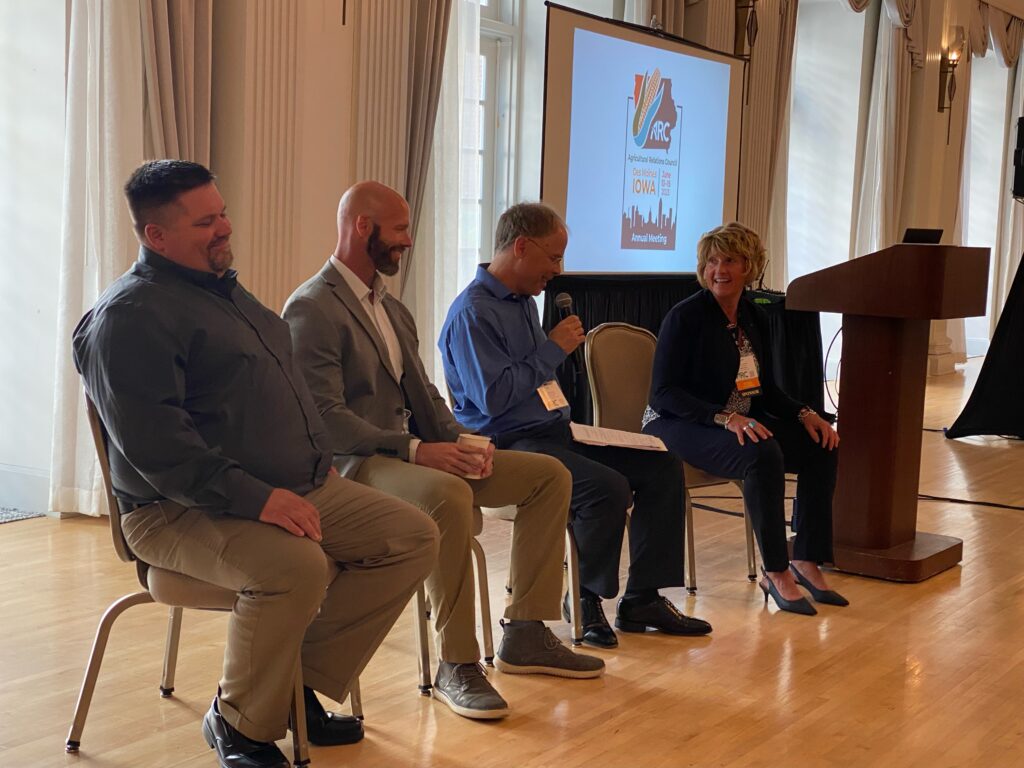
Healthy relationships between journalists and public relations professionals can make or break the stories we strive to share. Despite that, these relationships may be taken for granted at the expense of our messages. So, as communicators, how can we prioritize and develop these relationships?
We hosted a well-rounded panel of three accomplished reporters to share their insights and experiences working alongside public relations professionals at the 2023 ARC Annual Meeting, held from June 13-15, in Des Moines, Iowa. The panel, “What Reporters Want from PR Professionals,” addressed the above question and related issues in agricultural journalism. Mark Dorencamp of Brownfield Ag News, Gill Gullickson of The Furrow, and Dustin Hoffman of Iowa Agribusiness/Radio Network came together to provide a comprehensive look into the perspectives of journalists from various media types and backgrounds.
The panel provided an opportunity to re-examine the relationship between PR professionals and journalists. The panelists provided insight into their experience working alongside PR professionals, from the most memorable pitches they’ve received to the potential impact of artificial intelligence. For seasoned PR professionals, the panel served as a review of the changes to the field throughout the years from a journalistic perspective. The panel introduced young professionals to the value of a strong relationship with reporters. The presentation engaged both parties to highlight successes and inform future strategies for collaboration.
Many of the changes directly reflect evolving technology over the years. Beginning with the rapid adoption of podcasts and ending with the potential influence of artificial intelligence, the panelists explained changes to agricultural media and the opportunities they present to PR professionals willing to adapt to the times. The panel also discussed the rising prevalence of misinformation and bias in media. The panel noted that despite the increasing frequency of these challenges, all the artificial intelligence and technology in the world cannot match our ability as communicators to build meaningful relationships. As long as these relationships remain central to our work and partnerships, the panel is optimistic about the future of our field.
The panelists went on to describe the most memorable pitches they’ve received to illustrate the factors that make the most engaging stories. Across the board, the most memorable pitches emphasized the novel aspects of proposed solutions and the value of a variety of compiled sources. Reporters also benefit from a variety of compiled sources, especially when producers are directly involved. They explained that producers find the perspectives of other producers especially valuable, and that those perspectives elevate stories. This fact reiterates the central message of the presentation: that meaningful relationships and collaborations are vital to our work.
Issues facing agriculture
Submitted by Carroll and Jean Merry, Countryside Marketing, Inc.
Although no single issue floated to the top during the panel discussion, “Overview of Ag Issues in Iowa,” the two that garnered the most discussion focused on petrol and pork.
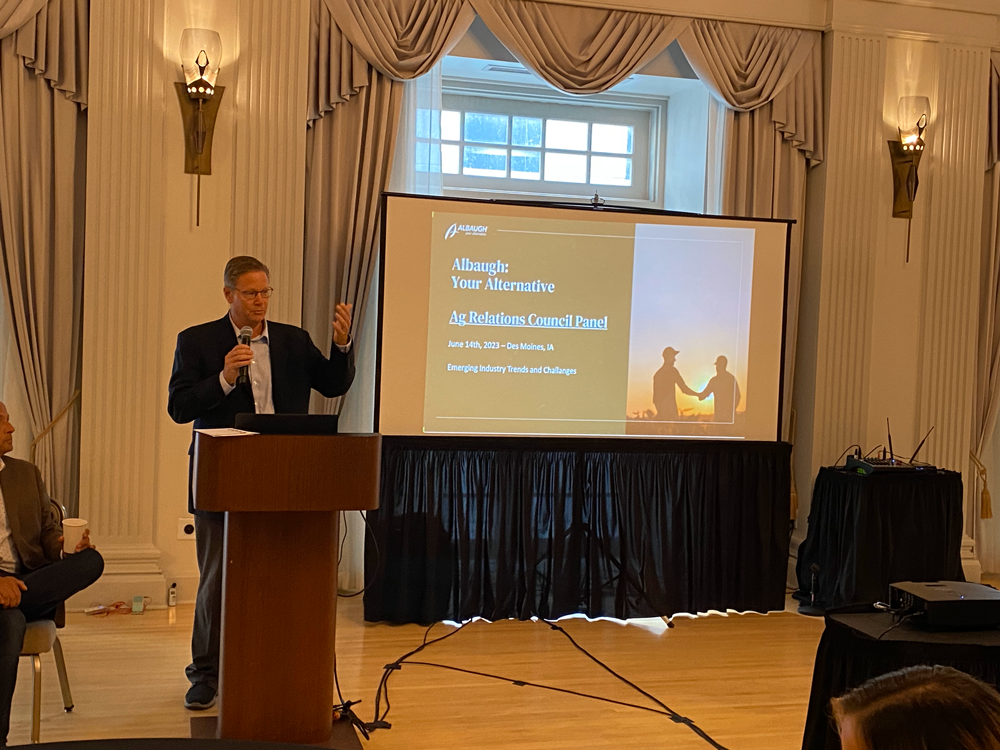
Asked how the industry is responding to the “green movement” to do away with fossil-based fuels, the group was quick to point out the efforts to achieve 100 percent bio-based diesel fuel for farm machinery. “The industry is moving very quickly to 100 percent biodiesel, both for on-farm use and transportation,” stated Aaron Putze with the Iowa Soybean Association, one of the panelists. Others briefing the group were Emily Ibach, Pivot Bio, Spencer Vance, Albaugh, LLC, and Ben Gleason, Iowa Nutrient Research and Education Council. Sally Behringer, MustangRED Communications, moderated the discussion.
All the panelists nodded in agreement as Putze talked of the progress that has been made using corn and other bio products to produce biodiesel. While the studies on using biodiesel for aircraft are ongoing, other uses, such as truck, agricultural and other off-road purposes, are growing continually. It was noted that the very nature of biodiesel, which allows it to be blended with any kind of diesel fuel, makes it practical for expanded adoption.
To a large extent, expansion of the use of biodiesel takes some sting out of anticipated reductions in corn-based ethanol as an additive for automobile gasoline. The panelists agreed that this is a positive that will be good for corn producers everywhere.
The big negative confronting pork producers in Iowa and other states will be the fallout and end result of the adoption of Proposition 12. In May, the U.S. Supreme Court rejected a challenge to California’s Proposition 12, which outlaws pork derived from mother pigs housed in less than 14-square feet. California produces only 1 percent of the nation’s pork but consumes 13 percent. Opponents to the law warned that it will cost farmers billions of dollars to realign pork-producing operations in order to comply.
The pork industry had argued that the restrictions significantly impact farmers outside of California and their ability to sell into one of the largest markets. The minority in the 5-4 court decision cited “a substantial burden against interstate commerce,” but their voices were shunted by the overall ruling, which affirmed two lower courts. Those courts found the out-of-state pork producers had failed to present a valid claim against California as a matter of law.
One panelist noted, “This isn’t over, yet.”


